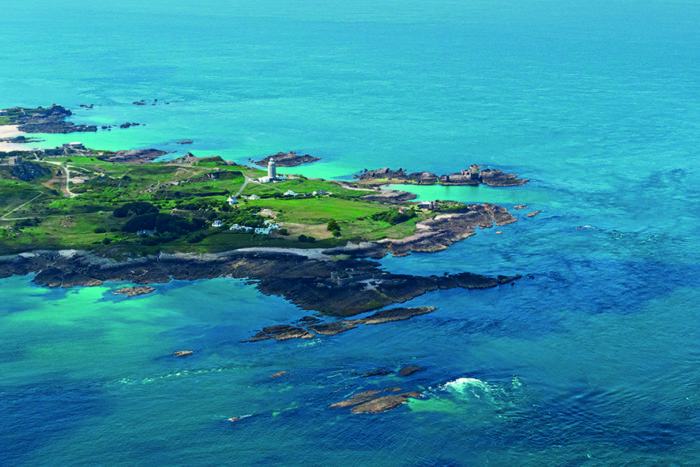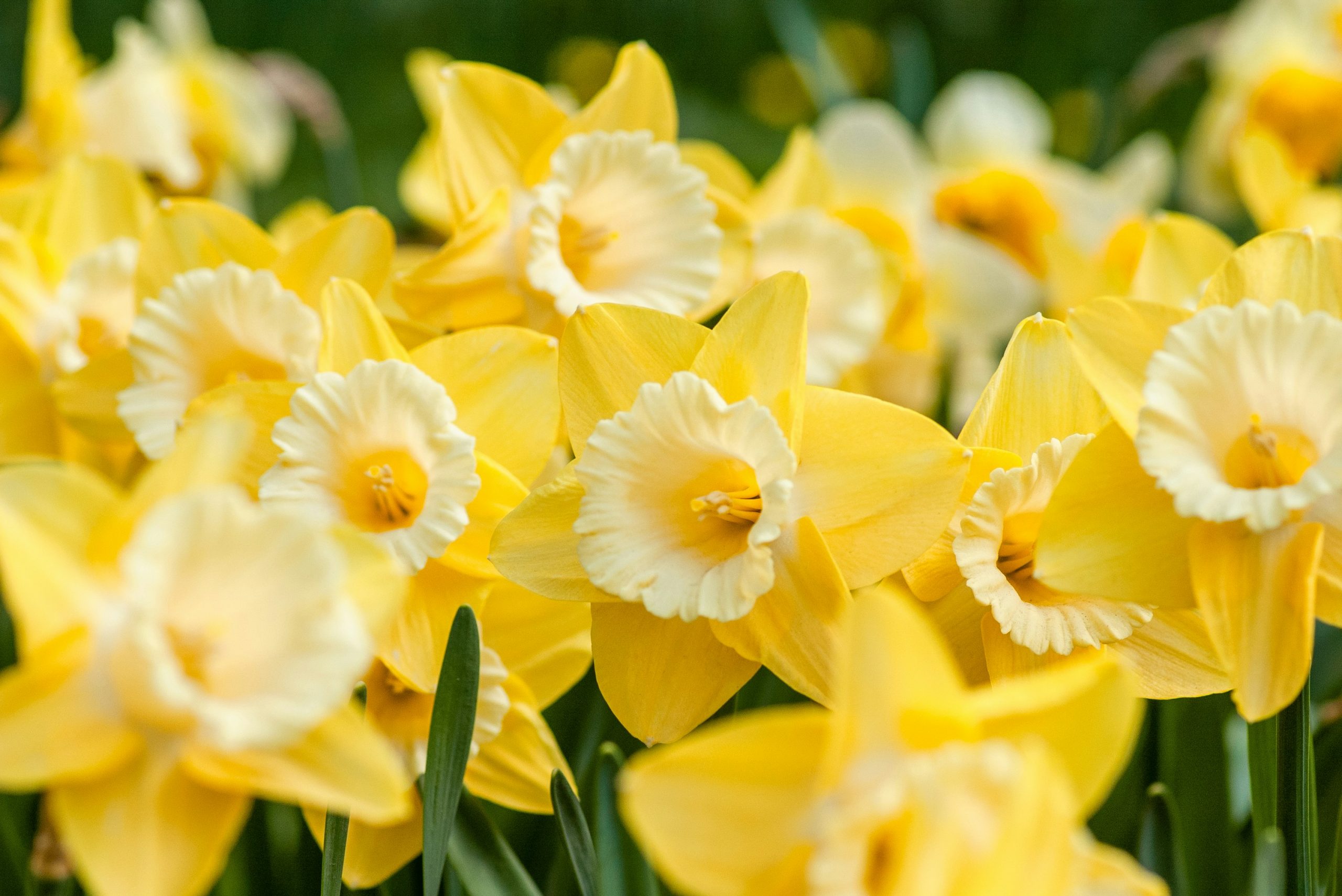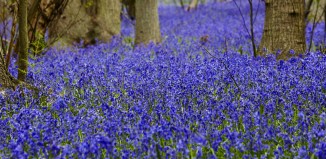The Channel Islands: Isles of Wonder
The Channel Islands are fringed with beautiful beaches, lapped by clear waters, teeming with wildlife, and rich in history, and yet remain relatively under-visited. Henrietta Easton uncovers some of the Channel Islands’ best-kept secrets
The Channel Islands: Alderney
Sitting prettily on a rock just 10km from France, the island of Alderney is an easy 40-minute (or less on a clear day) flight from Southampton. The northernmost of the inhabited Channel Islands, an archipelago in the English Channel made up of two British Crown Dependencies, which also includes Jersey, Guernsey, Sark and Herm, Alderney is the third largest of the Channel Islands.
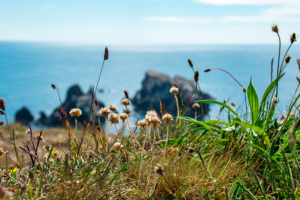
As you begin your descent into the airport, which will probably be one of the smallest you’ll ever visit, Alderney’s perfect white-sand coves, impossibly blue waters, sea bird-populated cliffs, and quaint fishermen’s houses will warmly welcome you to the island.
The people of Alderney are incredibly proud of their home, and rightly so. With a population of just over 2,000, everyone pretty much knows everyone, and everyone has their purpose, whether it be running the bike-hire shop, working with the wildlife trust to protect Alderney’s bird population, farming to produce Alderney’s famously creamy milk, or working on one of the fishing boats down in the harbour.
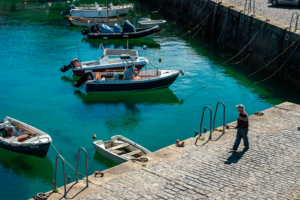
It is clear, however, from the number of gift shops, hotels, bed and breakfasts, and the activities on offer – be they walking trails or boat trips – that the island thrives off its tourism. Much of this tourism comes from closer travellers than you’d expect. During the pandemic, although the Channel Islands were on lockdown, travel between the islands was permitted and residents of the two larger islands, Guernsey and Jersey, set about exploring the smaller islands in the archipelago. Many of them visited Alderney for the very first time, and, being drawn to the peace of the island, its smaller population, and, of course, its beauty, bought holiday homes with fabulous sea views.
Once a Channel Islander, always a Channel Islander, it seems.
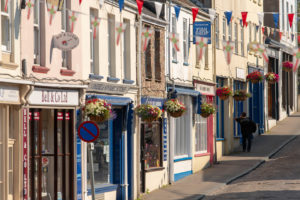
With a speed limit of just 35mph, and no enforced seat-belt law, nothing moves very fast on the island, and the pace of life matches that. In peak season, the beaches are populated but never packed (you’ll always be able to find a near-empty stretch of sand just around the next headland), and the island’s main town, St Anne, which practically covers Alderney in its entirety, is bustling during the day, even if in the evening activity is confined to one or two pubs and restaurants on the town’s main street, Victoria Street.
St Anne is wonderfully pretty, with winding cobbled streets that feel unmistakably French – not surprising since France is just a few kilometres away. You are aware that you are not in France, however, thanks to the number of undeniably British tea rooms that line Victoria Street, alongside gift shops selling buckets and spades, and the fact that the pubs are clearly the hub of the town’s activity during the evenings.
During the day, the most popular shop in town is the bike shop, Cycle & Surf, which has queues out the door every morning during summer. It’s worth getting up early to join the queue, or better still book in advance, as although it’s perfectly possible to walk around the island in a day, using bikes is the easiest way to explore the 10 miles of paved roads and many more miles of pathways that snake their way around the island.
Having bikes is also the best way to see the island’s abandoned forts, which are dotted on the island’s clifftops, offering spectacular views and a glimpse into Alderney’s fascinating history, which dates from Neolithic times.
Alderney history
The oldest site on the island is a burial chamber named Roc à l’Epine dating from 4,000 BC. Just a few metres from this site lies the best-preserved small Roman fort in Britain (now known as The Nunnery), which dates from the 4th century and looks out over the island’s only natural harbour at Longis Bay.
Also overlooking Longis Bay are the ruins of Essex Castle, built by the Tudors.
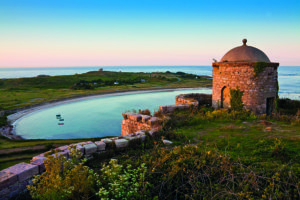
During Victorian times Alderney was again heavily fortified by the British in response to the French extending their fortifications at Cherbourg.
The British built 18 forts and batteries to protect the island. Many of these are now privately owned and some have been converted into stylish homes. Some of the forts are now derelict (these are particularly good for spotting the wildlife that have made them their home), while others were occupied and fortified by the Germans during the Second World War. The German forts are all in near-perfect condition, and visitors can walk through hidden passageways, warrens of trenches, and gun chambers, many of which still have reminders of their German occupiers, including bunks and bathrooms.
If you’d like to learn more about Alderney’s Second World War story, the Alderney Museum in St Anne’s town centre has an enormous collection of artefacts, including real pieces of a wrecked Spitfire.
Alderney beaches
Those looking for a typical bucket-and-spade seaside holiday will find every box ticked on the island. Braye, one of the island’s most popular beaches, is just a short walk from the town centre and close to a restaurant, café, and the Braye Beach Hotel, with its unrivalled sea views.
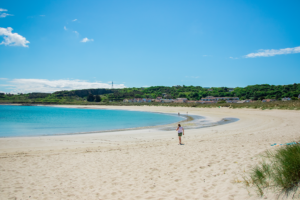
If you’re looking for somewhere quieter, one of the best beaches is Saye, conveniently located by an idyllic little campsite, and sheltered by rocky headlands, making it perfect for swimming. Even in summer you will often find you have the entire beach to yourself, but for a couple of grey seals or a noisy oystercatcher – instantly recognisable by their orange beaks and loud ‘peep-ing’ call.
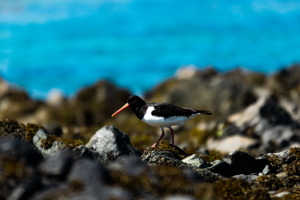
Alderney wildlife
You can’t come to the island without meeting some of Alderney’s impressive wildlife, including the blonde hedgehog, with its distinct cream-coloured spine. The Alderney Wildlife Trust runs a wide range of activities, walks and tours throughout the year, including bat and hedgehog walks, and boat trips to spot seabirds (including the island’s puffin colony). For the more adventurous, there are even kayaking trips where you can venture into caves and reach unspoilt beaches.
Hotels in Alderney
If you’d like a little bit of luxury during your stay, the brand-new boutique hotel, The Blonde Hedgehog, offers an effortlessly stylish and comfortable home away from home for your visit. Housing two suites, seven rooms, a family-friendly cottage, and a self-catering farmhouse the hotel’s calming seaside hues of sage green, deep maroons, and slate grey, make it feels like a little oasis in the town centre, with roll-top baths, rustic, relaxed furnishings, and ridiculously comfortable beds.

The hotel restaurant offers the best food on the island. Enjoy a cocktail in their pretty little suntrap garden before sitting down to a menu of locally sourced, farm-to-table ingredients, with surprising, modern twists, all inspired by Alderney and the Channel Islands.
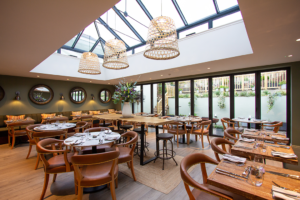
The Channel Islands
As well as regular flights from a handful of major UK airports, Alderney is easily accessible by boat from both Guernsey and Jersey. And, if you’re in the area, why not explore the other islands in the archipelago, each of which offers its own attractions.
Jersey
At five miles long and nine miles wide, Jersey is the largest of the Channel Islands and, being further south, it feels more like it’s in the Mediterranean than the English Channel. The island has a totally unique identity, as well as its own language – Jèrriais. As well as a handful of pretty towns, including the bustling capital St Helier, Jersey is blessed with a stunning coastline, incredible beaches, and miles of stunning coastal routes to explore.
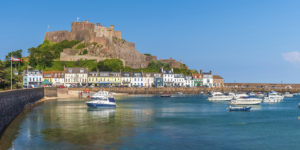
Like Alderney, the island’s history is rich and there is plenty to see – from ancient burial grounds and castles to Second World War bunkers, which tell stories of resistance, liberation, and celebration. One unique historical site visitors can stay in is Elizabeth Castle, which dates from around 1590 and was once home to Sir Walter Raleigh, while he was governor of Jersey. Prince Charles (later King Charles II) also sought refuge here during the English Civil War.
The castle, which offers a self-catering apartment, sits one mile off the coast of St Helier and is surrounded by sea twice a day. Another castle worth visiting is the medieval Mont Orgueil Castle, which has overlooked Gorey harbour, on the east of the island, for centuries.
Guernsey
Head north on the ferry from Jersey and you’ll reach Guernsey, the second largest island in the archipelago, and the former home of French writer Victor Hugo. Guernsey is best known for the scenery of its coastal cliffs, its 13th-century fortifications, and, of course, its pristine white beaches. The waterfront Cobo Bay Hotel (cobobayhotel.com) is the perfect base in which to enjoy all the island has to offer, and whose restaurant is the ideal spot in which to enjoy one of the beautiful Guernsey sunsets and watch pods of dolphins swim past, while sipping on a cocktail…or two.
Herm
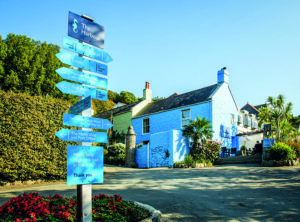
Just 20 minutes by ferry from St Peter Port in Guernsey is Herm, home to Europe’s most southerly puffin colony, local pods of dolphins and long stretches of unspoilt beaches and sandy cliff paths. The island has options for camping and self-catering cottages, as well as the harbour-side White House Hotel, which boasts amazing sea views and a Britain in Bloom Gold award-winning island as its garden.
Sark
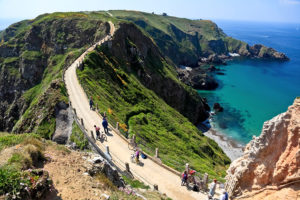
The smallest of the islands, and just 50 minutes by ferry from Guernsey, Sark is considered to be the archipelago’s crown jewel. A visit here is like stepping back in time. Cars – apart from tractors – are prohibited so it is best to get around by bike, or, if you’d prefer, horse-drawn carriage. With a population of 500, rising to about 1000 in peak season, Sark is an undiscovered gem. Although you could see the incredible La Seigneurie Gardens on a day trip, an overnight stay is recommended as Sark is the world’s first designated Dark Sky Island. With no public lighting in the lanes and only farm vehicles on the road, locals use The Milky Way to navigate, and it is at night-time that the island really shows her magic. There is a good selection of hotels, B&Bs and self-catering cottages for those wishing to experience Sark’s night skies.
This is an extract, read the full feature in the October/November 2022 issue of Discover Britain, out on 9 September.
Read more:

